-
Notifications
You must be signed in to change notification settings - Fork 3.4k
New issue
Have a question about this project? Sign up for a free GitHub account to open an issue and contact its maintainers and the community.
By clicking “Sign up for GitHub”, you agree to our terms of service and privacy statement. We’ll occasionally send you account related emails.
Already on GitHub? Sign in to your account
writeTextToCanvas treats "-" hyphen/minus, or "_" underscore, characters as space in some cases. #10649
Comments
|
Thanks for the report @maxizrinUX. I can't seem to reproduce this on Chrome or Firefox. We do use some standard web APIs to implement |
|
Everything renders correctly in the Sandcastle? Ignoring the text being cut off, that seems to be another issue. There are 2 lines not rendering, one of all underscores, and another all hyphens, and lines with a mix of both don't render the underscores. There's also a potentially undesired behavior, where the text is only cropped from the left for some reason. Since this method is using an HTML canvas, and that works properly when manually created, I can only assume something is wrong with the method. |
|
When trying out the given sandcastle (in a version with red backgrounds, for debugging purposes), this is the result for me (on Chrome): The missing underscores and the cut-off text are... well, the same thing. It's cutting off a bit from the bottom. When there only was an underscore, nothing is left there... Changing the call to cesium/Source/Core/writeTextToCanvas.js Line 170 in f1ec778
results in the following: That looks about right. I don't know what which might mean that these 'wrong' (?) EDIT: Looking at the history, it seems like the copyright information was omitted when |
|
For context, looks like the function was rewritten in #9765. (While it was "inspired by" the original third party implementation, it is not a direct in-lining. Though I would think we should have @maxizrinUX Would you be able to test before that PR and see if you're getting the same artifacts? |
I won't have the time in the foreseeable future. |
|
The state at https://github.com/CesiumGS/cesium/tree/22f7db308755cceaaddf33ea660d3b722baeb0ad (shortly before the linked PR was merged) creates this: It also omits the leading spaces in the first line, but the underscores are still there. The state at https://github.com/CesiumGS/cesium/tree/5b777deb3dfa7411732ab55332e59edfc611485f (directly after merging the PR) creates the first image that I posted in my previous comment. |
|
It seems that this function needs requirements clarification. Is it truly useful to clamp the canvas to the drawn text, which is effectively causing leading spaces to be ignored? Why isn't clamping occurring on the right side of text? What is the implementor supposed to do with the string parameter "baseline" (bottom of what)? Should this even be public or should it be made private? |
|
The function will require some work, indeed. And as they say: "Pull requests are welcome". But displaying text is tremendously difficult. (If somebody doesn't believe that: ꧁ خمن أي لغة هذه. ꧂ - and nowadays, some people even consider emojis as 'text' 😱 ) Some short notes:
Clamping the canvas to the text does make sense and is useful. Otherwise, the question is: How large should the canvas be? (With the obvious answer: Well, as large as the drawn text...). The fact that the leading spaces are removed is (on a low technical level) unrelated to that, which is part of the answer to the next question:
The wrong clamping appears to be the result of some attempts to compute the proper canvas size with the special
This is just the
It is public and will remain public. Not only for backward compatibility, but also because it is a useful function - or even necessary in order to easily create billboards with text. However, the image in #9765 showed some compatibility matrix where The latest version of that matrix is captured here (because it may change any minute, apparently): These properties - and more specifically, all properties that I used for the workaround in a previous comment - are no longer experimental, and supported by all browsers. So it might be possible to get rid of that custom |
|
@javagl thanks for the info. I should have been more specific as I was predominantly looking at measureText() rather than writeTextToCanvas(). Since I started looking at this last week I saw the actual... properties and was wondering what problem measureText() was trying to solve that built-in function wasn't providing. |
|
OK, that clarifies ist. But |
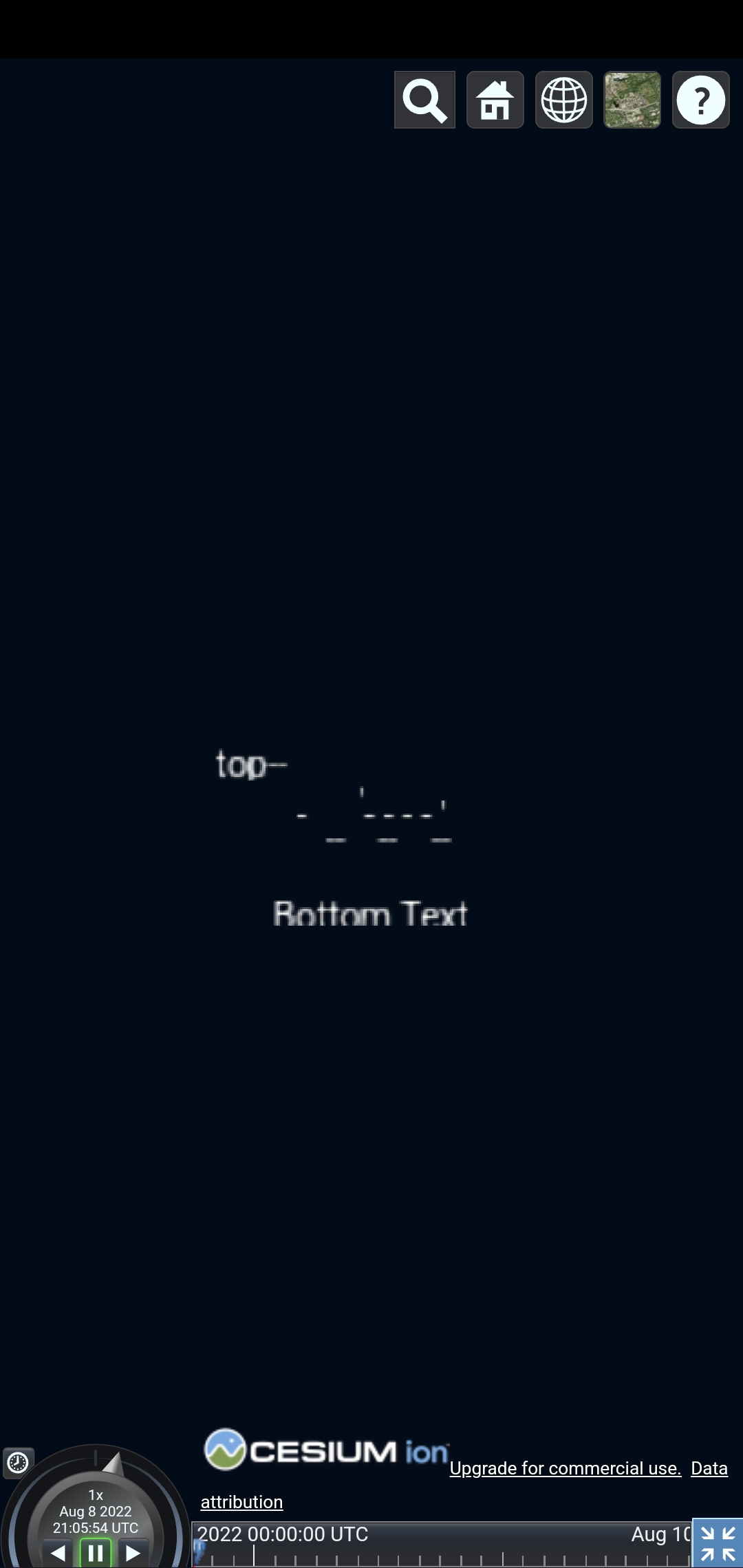
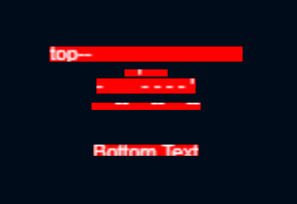
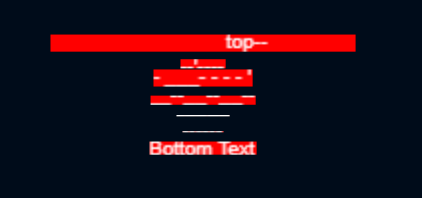
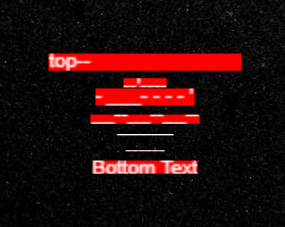
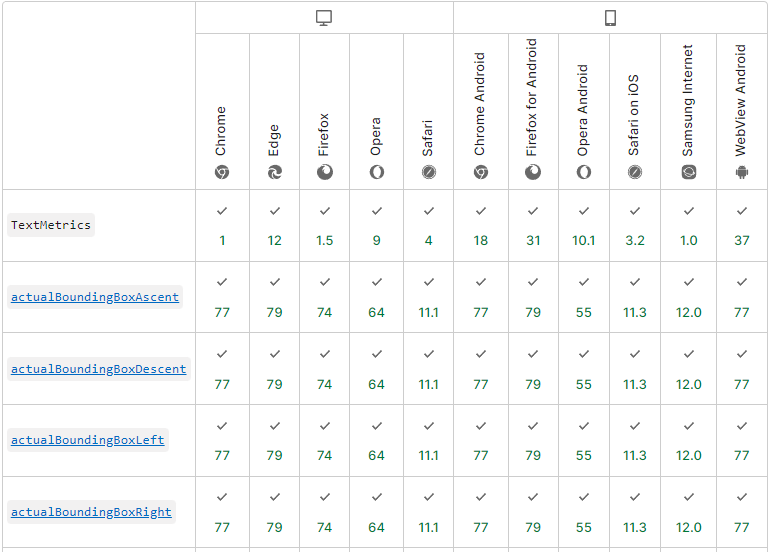
writeTextToCanvas doesn't show anything for only hyphens or underscores, and also cuts off sometimes, but that seems to be another issue.
(Running Cesium JS in Electron, there's no cutoff, but all hyphen or underscore text still does not render.)
Text with mixed hyphens and underscores renders only hyphens.
Checking the return value, it seems canvas height is set to 0, when the string contains only hyphens or only underscores.
An HTML canvas works as a workaround.
Sandcastle example:
https://sandcastle.cesium.com/#c=vZVRa9swEMe/yuGXOmDJabvBaN1sLHsc7GFhT4Yg2+dETNYF6ezMG/3uk2NStq5rUkh6tsF30v+O31mSO+Wg07hFB3dgcQtz9Lpt5LddLM6jcufPybLSFl0eTW5zm9tRI9GyZo1eqqqKf+UWYEM+RMje7DPNlePwpuy1rB01n3DlEH08TWA6SQZFoY0pSLnqBnYZANIUFmvtwa9p6xMoWobgsdNNgxWQNT0MqYDXCAZrfj/KdKNW+FB36zTjAn/wgubKdsoHGPi/MW2EeGY8gCdjGV8qE8pcDd59iN2friNiKqfBrg81piL0YIl3HYKSnMOSTS+P7YMQFyLYwLRj+4sreQRWkvUMGNbHCRHfnh0RlsulgPG6eM2v9+7caIFL7J8DYKfDunwZlWJQxrwAKdjrsVydFUaI/eZ6dsmdlOjNIaJwl+Ecpbo+muMjMYdTdogeD1ObfkExTm6jJMo89wZnoxDgg2425BhaZ2IpU8ZmY1TASou2/I4sS++HZMPULP1TmlW6A13dPfE3gtIo78NI3RrzVf/EPJplaZj/j9SQqrRdfenQGdUP09aXs89jUEqZpcF9WslEplDuUebf
Browser:
Vivaldi 5.3.2679.70 (Stable channel) (64-bit)
Operating System:
Windows 10 Pro 21H2 64-bit
The text was updated successfully, but these errors were encountered: